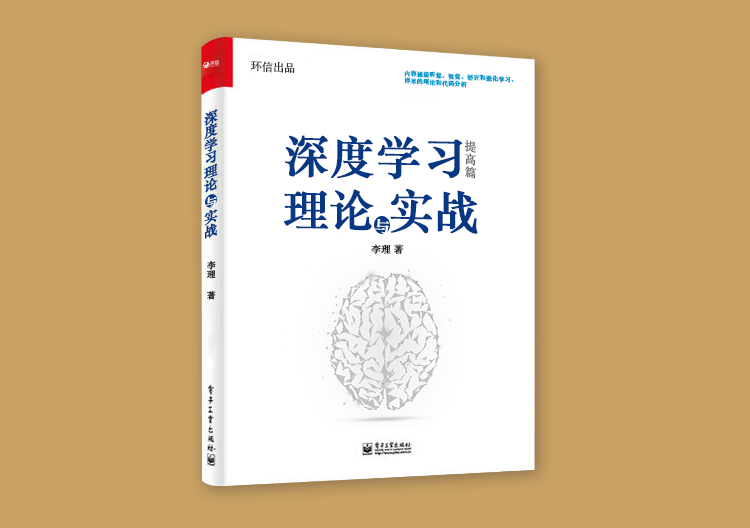编者按:环信开源国内首本免费深度学习理论和实战专著《深度学习理论与实战:提高篇 》,内容涵盖听觉,视觉,语言和强化学习,七百多页详尽的理论和代码分析。本文节选自《深度学习理论与实战:提高篇 》一书,原文链接http://fancyerii.github.io/2019/03/14/dl-book/ 。作者李理,环信人工智能研发中心vp,有十多年自然语言处理和人工智能研发经验,主持研发过多款智能硬件的问答和对话系统,负责环信中文语义分析开放平台和环信智能机器人的设计与研发。

6、Anchor
anchor的顺序非常重要,训练和预测要使用相同的anchor序列。另外也要匹配卷积的运算顺序。对于一个FPN,anchor的顺序要便于卷积层的输出预测anchor的得分和位移(shift)。因此通常使用如下顺序:
首先安装金字塔的层级排序,首先是第一层,然后是第二层
对于同一层,安装卷积的顺序从左上到右下逐行排序
对于同一个点,按照宽高比(aspect ratio)排序
Anchor Stride:在FPN网络结构下,前几层的feature map是高分辨率的。比如输入图片是1024x1024,则第一层的feature map是256x256,这将产生大约200k个anchor(2562563),这些anchor是32x32的,而它们的stride是4个像素,因此会有大量重叠的anchor。如果我们每隔一个cell(而不是每个cell)生成一次anchor,这将极大降低计算量。这里使用的stride是2,这和论文使用的1不同。生成anchor的代码如下:
# Generate Anchors
backbone_shapes = modellib.compute_backbone_shapes(config, config.IMAGE_SHAPE)
anchors = utils.generate_pyramid_anchors(config.RPN_ANCHOR_SCALES,
config.RPN_ANCHOR_RATIOS,
backbone_shapes,
config.BACKBONE_STRIDES,
config.RPN_ANCHOR_STRIDE)
# 输出anchor的摘要信息
num_levels = len(backbone_shapes)
anchors_per_cell = len(config.RPN_ANCHOR_RATIOS)
print("Count: ", anchors.shape[0])
print("Scales: ", config.RPN_ANCHOR_SCALES)
print("ratios: ", config.RPN_ANCHOR_RATIOS)
print("Anchors per Cell: ", anchors_per_cell)
print("Levels: ", num_levels)
anchors_per_level = []
for l in range(num_levels):
num_cells = backbone_shapes[l][0] * backbone_shapes[l][1]
anchors_per_level.append(anchors_per_cell * num_cells //
config.RPN_ANCHOR_STRIDE**2)
print("Anchors in Level {}: {}".format(l, anchors_per_level[l]))
输出的统计信息是:
Count: 4092
Scales: (8, 16, 32, 64, 128)
ratios: [0.5, 1, 2]
Anchors per Cell: 3
Levels: 5
Anchors in Level 0: 3072
Anchors in Level 1: 768
Anchors in Level 2: 192
Anchors in Level 3: 48
Anchors in Level 4: 12
我们来分析一下,总共有5种scales。对于第0层,Feature map是32x32,每个cell有3种宽高比,因此总共有3072个anchor;而第一层的Feature map是16x16,所以有768个anchor。我们来看每一层的feature map中心cell的anchor。
## Visualize anchors of one cell at the center of the feature map of a specific level
# Load and draw random image
image_id = np.random.choice(dataset.image_ids, 1)[0]
image, image_meta, _, _, _ = modellib.load_image_gt(dataset, config, image_id)
fig, ax = plt.subplots(1, figsize=(10, 10))
ax.imshow(image)
levels = len(backbone_shapes)
for level in range(levels):
colors = visualize.random_colors(levels)
# Compute the index of the anchors at the center of the image
level_start = sum(anchors_per_level[:level]) # sum of anchors of previous levels
level_anchors = anchors[level_start:level_start+anchors_per_level[level]]
print("Level {}. Anchors: {:6} Feature map Shape: {}".format(level,
level_anchors.shape[0], backbone_shapes[level]))
center_cell = backbone_shapes[level] // 2
center_cell_index = (center_cell[0] * backbone_shapes[level][1] + center_cell[1])
level_center = center_cell_index * anchors_per_cell
center_anchor = anchors_per_cell * (
(center_cell[0] * backbone_shapes[level][1] / config.RPN_ANCHOR_STRIDE**2) \
+ center_cell[1] / config.RPN_ANCHOR_STRIDE)
level_center = int(center_anchor)
# Draw anchors. Brightness show the order in the array, dark to bright.
for i, rect in enumerate(level_anchors[level_center:level_center+anchors_per_cell]):
y1, x1, y2, x2 = rect
p = patches.Rectangle((x1, y1), x2-x1, y2-y1, linewidth=2, facecolor='none',
edgecolor=(i+1)*np.array(colors[level]) / anchors_per_cell)
ax.add_patch(p)
结果如下图所示。
图:Anchor
7、训练数据生成器
我们在训练Mask R-CNN的时候,会计算候选的区域和真实的目标区域的IoU,从而选择正例和负例。
random_rois = 2000
g = modellib.data_generator(
dataset, config, shuffle=True, random_rois=random_rois,
batch_size=4,
detection_targets=True)
# Get Next Image
if random_rois:
[normalized_images, image_meta, rpn_match, rpn_bbox, gt_class_ids,
gt_boxes, gt_masks, rpn_rois, rois],
[mrcnn_class_ids, mrcnn_bbox, mrcnn_mask] = next(g)
log("rois", rois)
log("mrcnn_class_ids", mrcnn_class_ids)
log("mrcnn_bbox", mrcnn_bbox)
log("mrcnn_mask", mrcnn_mask)
else:
[normalized_images, image_meta, rpn_match, rpn_bbox, gt_boxes, gt_masks], _ =
next(g)
log("gt_class_ids", gt_class_ids)
log("gt_boxes", gt_boxes)
log("gt_masks", gt_masks)
log("rpn_match", rpn_match, )
log("rpn_bbox", rpn_bbox)
image_id = modellib.parse_image_meta(image_meta)["image_id"][0]
print("image_id: ", image_id, dataset.image_reference(image_id))
# Remove the last dim in mrcnn_class_ids. It's only added
# to satisfy Keras restriction on target shape.
mrcnn_class_ids = mrcnn_class_ids[:,:,0]
b = 0
# Restore original image (reverse normalization)
sample_image = modellib.unmold_image(normalized_images[b], config)
# Compute anchor shifts.
indices = np.where(rpn_match[b] == 1)[0]
refined_anchors = utils.apply_box_deltas(anchors[indices], rpn_bbox[b, :len(indices)]
* config.RPN_BBOX_STD_DEV)
log("anchors", anchors)
log("refined_anchors", refined_anchors)
# Get list of positive anchors
positive_anchor_ids = np.where(rpn_match[b] == 1)[0]
print("Positive anchors: {}".format(len(positive_anchor_ids)))
negative_anchor_ids = np.where(rpn_match[b] == -1)[0]
print("Negative anchors: {}".format(len(negative_anchor_ids)))
neutral_anchor_ids = np.where(rpn_match[b] == 0)[0]
print("Neutral anchors: {}".format(len(neutral_anchor_ids)))
# ROI breakdown by class
for c, n in zip(dataset.class_names, np.bincount(mrcnn_class_ids[b].flatten())):
if n:
print("{:23}: {}".format(c[:20], n))
# Show positive anchors
visualize.draw_boxes(sample_image, boxes=anchors[positive_anchor_ids],
refined_boxes=refined_anchors)
输出为:
anchors shape: (4092, 4) min: -90.50967 max: 154.50967 float64
refined_anchors shape: (3, 4) min: 6.00000 max: 128.00000 float32
Positive anchors: 3
Negative anchors: 253
Neutral anchors: 3836
BG : 22
square : 1
circle : 9
对于随机的一个图片,这里生成了4092个anchor,其中3个正样本,253个负样本,其余的都是无用的样本。下图是3个正样本;下图是负样本;而下图是无用的数据。
图:正样本anchor

图:负样本anchor
图:无用的anchor





